The Yellow Submarine Chronicles Part Two: You Could Pass for the Originals
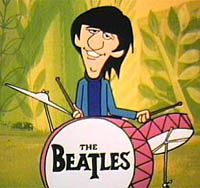 1967 was a banner year for the Beatles. In June they released one of the most innovative and influential albums of all time, Sgt. Pepper’s Lonely Hearts Club Band. They made two promotional films, the forerunner of today’s music videos, for their double A-side single Penny Lane and Strawberry Fields Forever. They were laying the groundwork for their own production company that would extend to all forms of media. The end of that year saw the release of their one and only television special, Magical Mystery Tour, which was an almost entirely self contained effort. Was it any wonder they had little time and even less interest in making another feature film?
1967 was a banner year for the Beatles. In June they released one of the most innovative and influential albums of all time, Sgt. Pepper’s Lonely Hearts Club Band. They made two promotional films, the forerunner of today’s music videos, for their double A-side single Penny Lane and Strawberry Fields Forever. They were laying the groundwork for their own production company that would extend to all forms of media. The end of that year saw the release of their one and only television special, Magical Mystery Tour, which was an almost entirely self contained effort. Was it any wonder they had little time and even less interest in making another feature film?
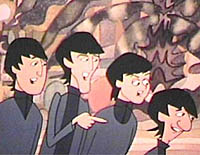 Regardless of the Beatles’ time constraints or personal opinions on where their efforts could be best invested, United Artists was still owed the third and final film in a three picture deal. The Beatles had entered into this contract in 1964, shortly before production began on the mock documentary A Hard Day’s Night. In 1965, the Beatles returned to the big screen in something that better resembled a true feature, even if they did play exaggerations of themselves, in Help! Sound technology was rapidly progressing in these years and the Beatles felt they were, first and foremost, recording artists. In 1966, they had even gone so far as to discontinue touring, which took the largest portion of their time, when they felt that live concerts could no longer accurately reproduce their studio sound. The public was still starved for new Beatles product and United Artists had every intention of making good on their lucrative contract. Enter Al Brodax, an American producer for King Features Syndicate who specialized in animated productions, with a solution to, theoretically, keep everyone happy.
Regardless of the Beatles’ time constraints or personal opinions on where their efforts could be best invested, United Artists was still owed the third and final film in a three picture deal. The Beatles had entered into this contract in 1964, shortly before production began on the mock documentary A Hard Day’s Night. In 1965, the Beatles returned to the big screen in something that better resembled a true feature, even if they did play exaggerations of themselves, in Help! Sound technology was rapidly progressing in these years and the Beatles felt they were, first and foremost, recording artists. In 1966, they had even gone so far as to discontinue touring, which took the largest portion of their time, when they felt that live concerts could no longer accurately reproduce their studio sound. The public was still starved for new Beatles product and United Artists had every intention of making good on their lucrative contract. Enter Al Brodax, an American producer for King Features Syndicate who specialized in animated productions, with a solution to, theoretically, keep everyone happy.
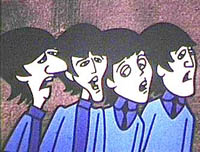 Two years earlier in 1965, Brodax had scored a marketing coup when he convinced the Beatles’ manager, Brian Epstein, to license their animated likenesses for a Saturday morning television series. The Beatles cartoon show was a cheaply made and rapidly produced series of animated shorts but still managed to satisfy the fans. Each 30 minute episode consisted of two cartoon vignettes based on Beatles songs with a sing-a-long section bridging the middle. The animation was broadly done at best and extremely limited in some segments like the sing-a-longs. The voices for all four Beatles were provided by two actors, English Lance Percival who did a passable job for Saturday morning, and Paul Frees, an American whose distinctive voice was regularly employed by almost every major studio (sadly this otherwise very talented voice actor sounded nothing like any of the Beatles). Backed by the advertising dollars of the A.C. Gilbert Toy Company, the show’s 78 episodes played for four years on Saturday morning television (almost outlasting the group that inspired them!) and then found a home in limited syndication reaching into the 1980’s.
Two years earlier in 1965, Brodax had scored a marketing coup when he convinced the Beatles’ manager, Brian Epstein, to license their animated likenesses for a Saturday morning television series. The Beatles cartoon show was a cheaply made and rapidly produced series of animated shorts but still managed to satisfy the fans. Each 30 minute episode consisted of two cartoon vignettes based on Beatles songs with a sing-a-long section bridging the middle. The animation was broadly done at best and extremely limited in some segments like the sing-a-longs. The voices for all four Beatles were provided by two actors, English Lance Percival who did a passable job for Saturday morning, and Paul Frees, an American whose distinctive voice was regularly employed by almost every major studio (sadly this otherwise very talented voice actor sounded nothing like any of the Beatles). Backed by the advertising dollars of the A.C. Gilbert Toy Company, the show’s 78 episodes played for four years on Saturday morning television (almost outlasting the group that inspired them!) and then found a home in limited syndication reaching into the 1980’s.
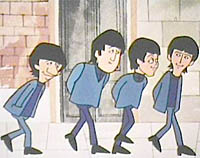 In spite of its artistic shortcomings, the Beatles cartoon show was a ratings bombshell in the United States. With this success, it was a safe bet that a feature film based on the television series would prove even more popular with the public. With writers, a full animation studio, and voice talent already lined up and available, this project should have been an easy sell for Brodax. Unfortunately he had not counted on one unexpected and critical source of opposition – the Beatles.
In spite of its artistic shortcomings, the Beatles cartoon show was a ratings bombshell in the United States. With this success, it was a safe bet that a feature film based on the television series would prove even more popular with the public. With writers, a full animation studio, and voice talent already lined up and available, this project should have been an easy sell for Brodax. Unfortunately he had not counted on one unexpected and critical source of opposition – the Beatles.
While they had never actively voiced their disdain up to this point, the Beatles were by no means fans of the cartoons that bore their images. Brian Epstein had been so appalled when he was shown early examples of the animated shorts that he demanded a clause be added to the contract that guaranteed the series would never be aired in England! The major complaints from the Beatles concerned the writing and how their style of humor was dumbed down for the Saturday morning audience. A feature film produced in the same style as this series was out of the question to them.
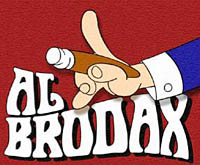 With his seemingly air tight plan on the brink of spoiling, Al Brodax had to scramble to salvage it. United Artists and King Features were both on board and he still held onto the one bargaining chip he had where the Beatles were concerned – their contractual obligation to a project they had no interest in. Brodax wisely switched tactics where the Beatles were concerned and, rather than trying to sell them on the idea of their limited involvement, promised them participation on any level they desired. He also modified his pitch to assure them that this was by no means a “kiddie” film and that he would employ the best writers King Features could find to accurately portray the current psychedelic culture on the big screen with the Beatles humor translated in tact.
With his seemingly air tight plan on the brink of spoiling, Al Brodax had to scramble to salvage it. United Artists and King Features were both on board and he still held onto the one bargaining chip he had where the Beatles were concerned – their contractual obligation to a project they had no interest in. Brodax wisely switched tactics where the Beatles were concerned and, rather than trying to sell them on the idea of their limited involvement, promised them participation on any level they desired. He also modified his pitch to assure them that this was by no means a “kiddie” film and that he would employ the best writers King Features could find to accurately portray the current psychedelic culture on the big screen with the Beatles humor translated in tact.
The final decision by the Beatles to green light the film project that would eventually become Yellow Submarine was undoubtedly motivated by apathy tinged with just a little concern for their image. Al Brodax had not counted on his already assembled staff being shot down and immediate retooling was necessary. As 1967 came to a close he had very little to go on other than the fact that he and King Features were now obligated to produce an animated feature film starring the Beatles and their music. One thing was set in stone though; the completed film was due to the studio in time for a fall 1968 release, less than one year later!
